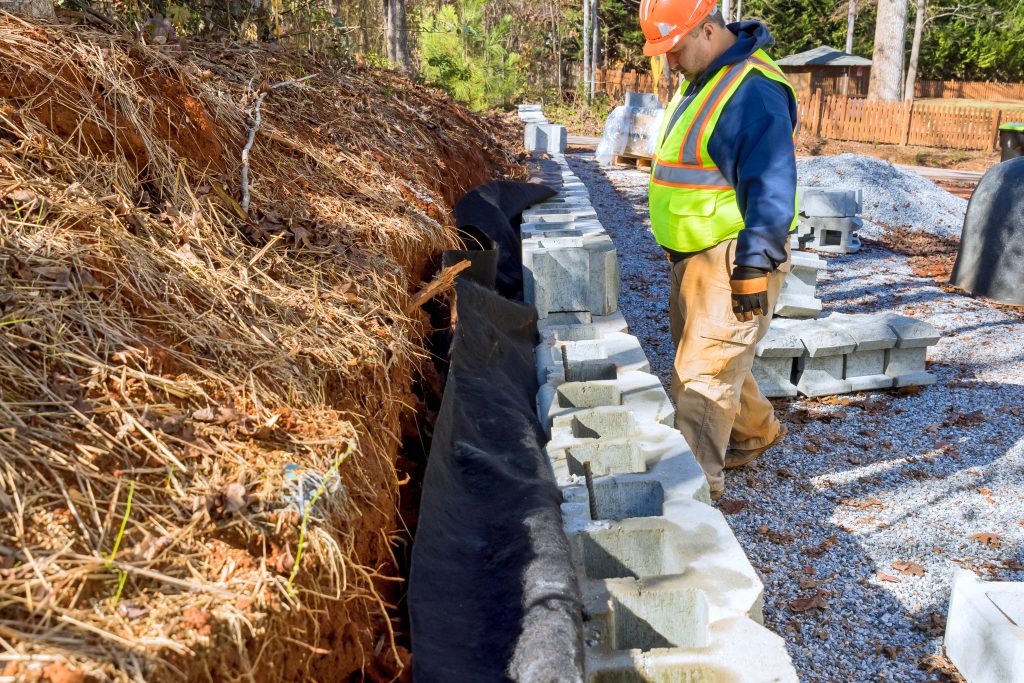In Pennsylvania, where hills and valleys define the landscape, building on steep slopes requires a careful balance of engineering and environmental protection. Without proper erosion and sediment control, rainfall quickly turns into dangerous stormwater runoff, carrying soils downslope and overwhelming nearby storm drains. To ensure project stability and protect communities, contractors must rely on a combination of construction erosion control products, natural reinforcements, and engineered systems. The goal is simple: achieve effective erosion control while meeting regulatory standards for long term stability.
Why Steep Slopes Are Vulnerable
When water runoff accelerates down a slope, the velocity of water flow dislodges soil particles. This not only threatens the stability of the site but also clogs downstream systems. On active construction sites, unprotected soils lead to loss of productivity, fines, and long-term damage. That’s why erosion control slope stabilization strategies must be built into the earliest project stages to prevent soil erosion and safeguard infrastructure.
Soil Stabilization and Retaining Walls
The first step in slope stabilization is often structural. A retaining wall provides immediate soil stabilization, holding soil in place and reducing slope steepness. By managing the grade, retaining walls give contractors more control over controlling erosion while also creating usable land. These systems are most effective when paired with other construction erosion control products, including mats, fences, and sediment traps.
Sediment Trap Construction and Erosion Control
In Pennsylvania’s regulatory environment, temporary sediment trap construction is a common requirement on active construction sites. A sediment trap is a basin built to intercept runoff, allowing soil particles to settle before water exits. This form of erosion control sediment trap protects waterways from contamination.
Products designed for sediment trap erosion control, including erosion control filter socks placed around inlets or along slopes, provide an added layer of defense. These controls preventing erosion at the source and reduce the pressure placed on traps, making them more efficient and reliable.
Erosion Control Mats and Geogrid Reinforcement
Surface protection is essential on steep slopes. Covering exposed soil with an erosion control mat prevents raindrop impact and reduces displacement. Many mats are made from coconut fibers, which provide durability and are considered high quality natural materials. A biodegradable erosion control mat offers temporary stability while vegetation establishes, breaking down naturally as the slope becomes self-sustaining.
In cases where slopes are especially unstable, a geogrid for slope stabilization is installed beneath the soil surface. This synthetic reinforcement interlocks with soil, improving soil stabilization and giving contractors more control over water runoff and slope performance. By combining geogrid for slope stabilization with surface mats, sites achieve both deep and surface-level reinforcement.
Silt Fence and Filter Socks for Construction Sites
At the base of slopes, perimeter controls play a critical role in erosion and sediment control. A silt fence intercepts runoff, filtering sediment while allowing water to flow into designated channels. Properly trenched and supported, a silt fence reduces the risk of downstream clogging in storm drains.
Meanwhile, erosion control filter socks provide flexible solutions for smaller drainage paths or around inlets. These construction erosion control products are especially useful in urban construction sites where space is limited and multiple controls must be layered.
Native Plantings and Long-Term Stabilization
Structural and synthetic measures provide immediate protection, but native plantings are the true foundation of long term slope success. Once vegetation establishes, roots anchor soil, reduce stormwater runoff, and support preventing erosion naturally. Pairing biodegradable erosion control mat products with fast-growing grasses and shrubs ensures that protection transitions smoothly from artificial systems to natural stability.
Contractors in Pennsylvania often combine coconut fibers in matting with native plantings, creating an effective erosion control system that is both sustainable and environmentally friendly.
Scenarios in Pennsylvania Projects
- Residential Development Near Pittsburgh
Steep backyard slopes threatened to erode into a street. Contractors installed erosion control mats made of coconut fibers, combined with native plantings for long term stability. A silt fence at the bottom intercepted runoff, while a small sediment trap construction provided basin protection. - Highway Expansion in Harrisburg
A large road cut required a retaining wall for slope stabilization, paired with a geogrid for slope stabilization beneath the soil. To control stormwater runoff, crews used erosion control filter socks along ditches and built an erosion control sediment trap to capture displaced soils. - Commercial Site in Erie
Contractors managed controlling erosion by installing biodegradable erosion control mat products, combined with erosion and sediment control devices like silt fence and sediment trap erosion control basins. This high quality layered approach ensured prevent soil erosion while meeting local regulations.
Conclusion
For Pennsylvania projects, erosion control slope stabilization is not optional—it’s essential. By combining construction erosion control products such as silt fence, erosion control filter socks, erosion control mats, and sediment trap construction, contractors effectively preventing erosion on steep slopes. Structural systems like retaining walls and geogrid for slope stabilization provide deeper reinforcement, while native plantings ensure long term resilience.
Every tool—from a biodegradable erosion control mat made of coconut fibers to a carefully engineered erosion control sediment trap—works together to protect sites, maintain compliance, and deliver high quality results. With effective erosion control, contractors across Pennsylvania can build confidently on slopes while protecting waterways from harmful stormwater runoff.

